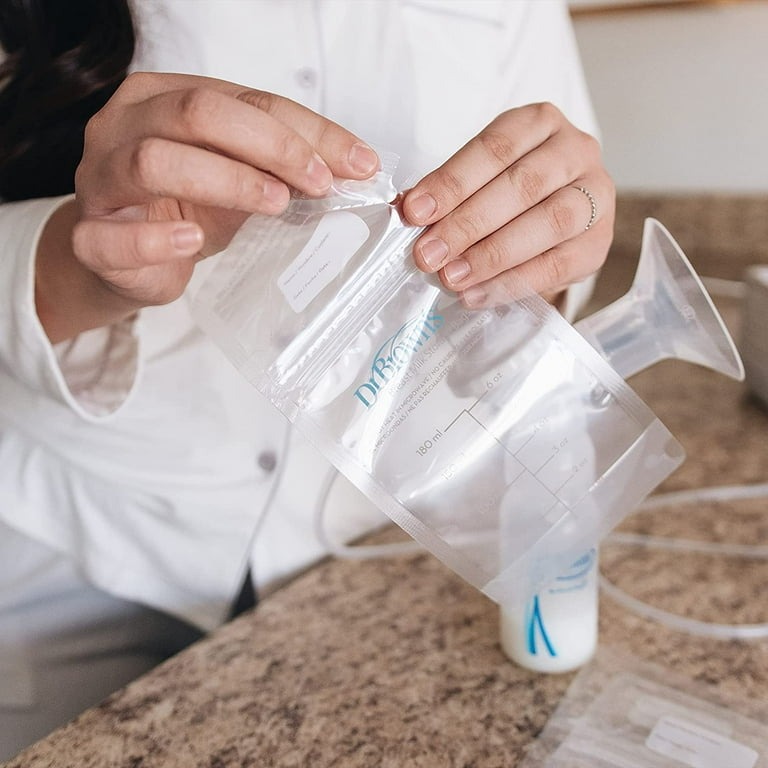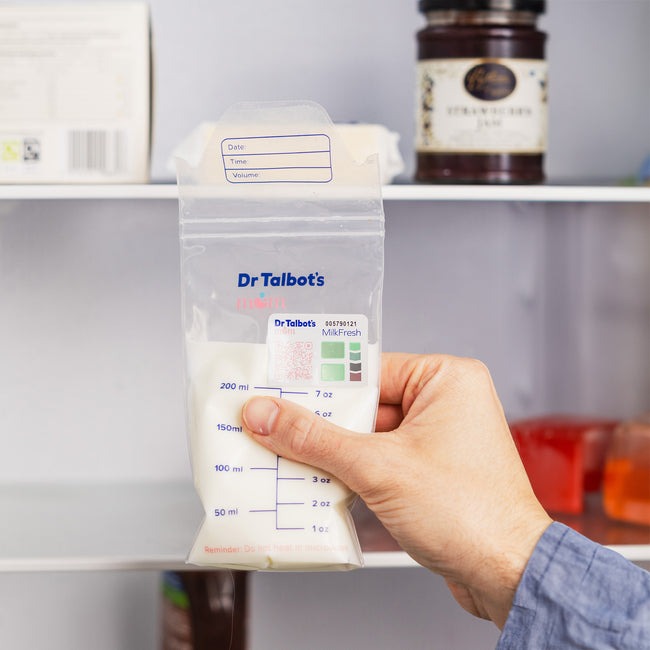Introduction to Breast Milk Storage
Breastfeeding offers numerous health benefits for infants, but it comes with its challenges. One such challenge is ensuring that pumped breast milk remains safe and nutritious for babies, even when you’re away from them or storing it for later use. Safe storage methods are essential for maintaining the quality of breast milk. Breast milk bags have grown popular as a convenient, hygienic, and efficient solution for storing this precious resource.
Breast milk bags are specially designed to hold pumped milk securely. They provide a sterile environment that prevents contamination. They are typically made of durable, food-grade material that can withstand temperature changes. These bags are also pre-sterilized and come with a secure sealing mechanism to avoid spills or leaks. Most breast milk bags can be stored in the freezer, making them an excellent option for managing supply and demand.
Given the sensitivity of breast milk to temperature changes and potential contaminants, choosing the right storage option is crucial. This is where breast milk bags stand out as they are specifically crafted for this purpose. For new parents or caregivers looking to understand the nuances of breast milk storage, we will delve into the types, features, usage, and tips related to breast milk bags. This will help in ensuring your baby gets the best nutrition possible, even when breastfed milk is served from a bottle.
Types of Breast Milk Bags
Breast milk bags come in various types to suit different needs. The most common types are single-use bags and reusable bags. Single-use bags are disposable and ideal for one-time storage. They offer convenience and ensure a high level of hygiene as there is no need to clean them after use. Reusable breast milk bags, on the other hand, can be washed and re-sterilized for multiple uses. They are eco-friendly and cost-effective in the long run.
Another distinction lies in the material used. Most breast milk bags are made from BPA-free plastic, which is safe for storing milk for infants. Some brands offer biodegradable options, reducing environmental impact. Thickness can also vary, with thicker bags providing more durability and better protection against leaks or punctures.
Moreover, certain breast milk bags are designed with features like double zipper seals and reinforced sides for extra security. Some have labeling areas for easier organization, with spaces to write dates and quantities. Others come equipped with adapters allowing them to connect directly to breast pumps. These pump-and-store bags simplify the storage process by eliminating the need to transfer milk, reducing waste and potential contamination.
In summary, when choosing breast milk bags, consider your specific needs. Think about usage frequency, desired durability, environmental impact, and the convenience you require. Each type offers unique benefits, from the single-use disposables to the long-lasting, eco-conscious reusable options.
Features to Look for in Breast Milk Bags

When selecting breast milk bags, it’s essential to consider their features. The right features will help maintain the quality of your expressed milk and make storage more convenient. Here are key elements to look for:
Material Quality and Safety
Choose bags that are BPA-free and made of food-grade material. Safety is crucial for your baby’s health.
Secure Sealing Mechanism
Opt for bags with double zipper seals or secure screw caps. They prevent leaks and keep milk fresh.
Durability for Storage
Look for thick, puncture-resistant bags. They withstand freezer storage and protect milk from damage.
Storage Capacity
Pick bags in various sizes to suit small or large volumes of milk. This helps with portion control.
Easy to Label
Select bags with clear labeling areas. Write dates and quantities for better tracking and organization.
Pump Compatibility
If possible, choose pump-and-store bags. They attach to the pump, reducing spills and waste.
Pre-sterilized Bags
For convenience, pre-sterilized bags ensure hygiene and save time. They are ready for immediate use.
Eco-Friendly Options
For those eco-conscious, biodegradable bags are a good pick. They reduce environmental impact.
By keeping these features in mind, you will be able to choose the best breast milk bags that ensure safety, convenience, and efficiency in storing your precious milk.
How to Properly Use Breast Milk Storage Bags
Using breast milk bags correctly is key to preserving your milk’s quality. Here are straightforward steps to ensure proper use:
Wash Hands Before Handling
Always wash your hands thoroughly before touching the bags to avoid contamination.
Fill the Bags Appropriately
Do not overfill bags; leave some space at the top for expansion when freezing.
Squeeze Out Excess Air
Before sealing, gently squeeze the bag to remove excess air, minimizing oxidation.
Seal the Bag Securely
Ensure the double zipper or screw caps are closed tightly to prevent leaks.
Label Each Bag
Clearly write the date and volume of milk on the bag’s label area.
Store Upright
Place bags upright in the refrigerator or freezer to save space and prevent spills.
Freeze Flat for Efficiency
If freezing, lay bags flat initially. Once frozen, you can stack them to save space.
Thaw Milk Safely
To thaw, place the bag in the refrigerator or in a bowl of warm water. Never microwave.
Pour Carefully Into Bottles
After thawing, open the bag and pour milk into a bottle slowly to avoid spilling.
By following these guidelines with each use, you’ll maintain the breast milk’s freshness and nutritional value for your baby.
Tips for Organizing and Storing Breast Milk Bags
Proper organization and storage of breast milk bags is vital for easy access and maintaining milk quality. Here are some tips to keep everything in order:
Label Each Bag Clearly
Write the date and amount on each bag. Use a waterproof marker for this.
Follow the First-In, First-Out Rule
Use the oldest breast milk first. This ensures milk doesn’t go past its prime.
Keep Bags Upright in Storage
Store bags upright in the refrigerator or freezer. This prevents spills and saves space.
Group Bags by Date
Organize bags by pumping date. Keep the oldest in front for easy use.
Avoid Stacking Wet Bags
Lay bags flat to freeze. Only stack them when they are fully frozen.
Use Storage Bins or Containers
Separate bags in bins or containers. Label bins with ranges of dates for quick finding.
By adopting these simple yet effective tips, you’ll maximize storage efficiency. Organized breast milk bags make feeding time smoother and less stressful for parents.
The Do’s and Don’ts of Breast Milk Bag Storage

When storing breast milk, certain practices ensure safety and quality. Remember these do’s and don’ts:
Do:
- Check Bag Integrity: Before use, check for any damage. Damaged bags can lead to contamination.
- Follow Manufacturer’s Instructions: Read the storage guidelines on the bag’s packaging for best results.
- Keep a Consistent Temperature: Store breast milk in a steady cold environment to preserve nutrients.
- Use Within Recommended Time Limits: Frozen breast milk has a shelf life, usually up to 6 months.
- Thaw Milk Gradually: Move bags from freezer to fridge to allow a slow thaw.
- Use Thawed Milk Quickly: After thawing, use the milk within 24 hours to ensure freshness.
Don’t:
- Expose to Temperature Fluctuations: Avoid moving bags between different temperatures often.
- Reuse Single-use Bags: Single-use bags are sterile and safe for one-time use only.
- Overfill Bags: Leave space for milk to expand when freezing.
- Force Thawing: Never thaw breast milk in a microwave or in boiling water.
- Mix Milk of Different Temperatures: Combining hot and cold milk can cause spoilage.
- Forget to Label: Always date and measure milk before storing to track usage.
By following these simple guidelines, your breast milk will remain safe and nutritious for your baby.
Cleaning and Sterilization of Breast Milk Bags
For reusable breast milk bags, cleaning and sterilization are key to safe milk storage. Here’s how to do it properly:
Wash With Care
Start by rinsing bags with cold water to remove residue. Then, wash with warm soapy water. Use a soft brush for thorough cleaning.
Rinse Thoroughly
After washing, rinse bags well. Make sure there’s no soap left as it can contaminate the milk.
Sterilize Regularly
Use boiling water or a steam sterilizer to sterilize the bags. Follow manufacturers’ instructions on the duration.
Dry Completely
Let bags air dry on a clean rack. Avoid using towels, as they can spread bacteria.
Store Neatly
Keep dry, sterilized bags in a clean container. Ensure the storage area is also clean and dry.
By following these steps, you’ll maintain the quality and safety of your breast milk. Remember, regular cleaning and sterilization of breast milk bags is a must. It ensures your baby’s milk remains free of harmful bacteria and safe to consume.
Alternatives to Breast Milk Bags for Milk Storage

While breast milk bags offer convenience, other options exist for storing milk safely. Here are some alternatives:
Hard Plastic Containers
Choose BPA-free, sealable containers. They are durable and reusable. Ensure lids fit tightly.
Glass Bottles
Glass is chemical-free and can last long. Select bottles with leak-proof lids.
Silicon Milk Storage Trays
Silicon trays can freeze milk in portions. They are flexible and easy to use.
Ice Cube Trays
Cover ice cube trays with cling film or lids. They are good for small amounts.
Freezer-Safe Jars
Use wide-mouthed jars to avoid cracking. Choose ones with air-tight seals.
Each method has its pros and cons. Containers and bottles work for large volumes. Silicon trays and ice cube trays help with portion control. Jars are ideal for compact storage. When using these methods, remember to clean and sterilize them just as with breast milk bags. Label all containers with dates and amounts before storing. This will ensure you use the oldest milk first. It’s vital to maintain hygiene and organize storage for the health of your baby.
